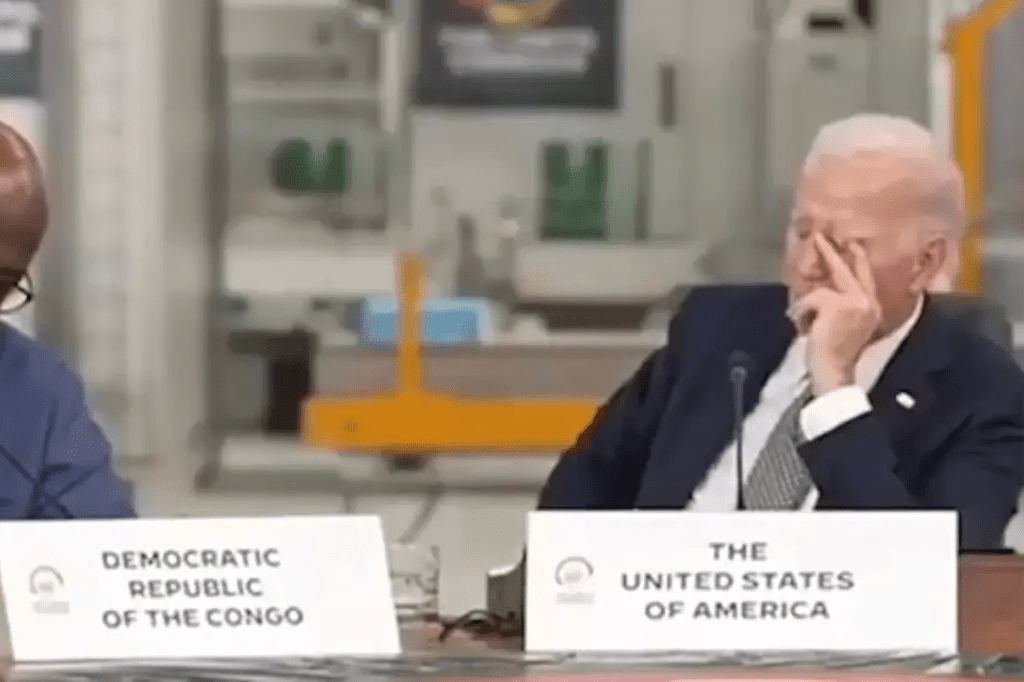Former White House Press Secretary Karine Jean-Pierre Stunned Lawmakers by Saying She “Couldn’t Recall a Single Video” of President Biden Freezing or Appearing Confused
In a moment that has sparked new controversy and intense scrutiny, former White House Press Secretary Karine Jean-Pierre startled lawmakers when she told a congressional oversight committee that she could “not recall a single video of President Joe Biden freezing or appearing confused.” Her testimony, along with a newly released transcript and supporting footage, has ignited a debate about transparency, accountability and the very record of the presidency.
The testimony took place last month during a hearing in which Jean-Pierre was questioned about the fitness of President Biden to continue in office. During a line of questioning, the former press secretary asserted that she could not remember encountering any video evidence of the president behaving in ways frequently cited by critics — moments in which he appeared disoriented, froze mid-sentence, or lost his train of thought during public appearances. According to the transcript, she said the words directly and calmly. The moment left members of both parties momentarily silent, and quickly became a focal point in subsequent media coverage.

The timing of the comment is striking. Over the past three years, numerous videos have circulated online and through news outlets showing President Biden stumbling during remarks, pausing unexpectedly and appearing to lose track of what he was saying. Many of these clips have become viral, and they form part of a broader public discussion about the president’s cognitive fitness, especially as he approaches re-election efforts. Advocates argue that some instances are merely normal pauses or stage missteps, while critics view them as evidence of deeper issues. In light of that, Jean-Pierre’s inability—or refusal—to acknowledge any of them has drawn sharp criticism.
Supporters of the former press secretary and the administration defended her—pointing out that she served as the chief spokesperson for the White House and may not have reviewed the entire landscape of internal video records. Some communications veterans say it is “entirely plausible” she was never shown or asked to review every clip. One former senior White House official, speaking on condition of anonymity, said that “the press secretary field is vast and chaotic. Everything from internal campaign footage to off-camera moments may never come across her desk.” Nevertheless, critics argue that Jean-Pierre’s statement conflicts with the public record and creates questions about what the White House has chosen to acknowledge or ignore.

The moment took on new significance when the full transcript of her testimony was released. According to the document, Representative James Comer pressed her repeatedly: “Are you aware of any video in which the president froze, lost his place, or appeared disoriented in public? Yes or no?” Jean-Pierre’s answer: “No, I cannot recall a video like that.” That exchange has since been quoted thousands of times on social media and broadcast channels. In a separate exchange, she also confirmed she had no documentation showing that any White House staff member had recommended the president undergo a medical evaluation solely based on his public performance. The questions—and her responses—have set off firestorms in congressional committees, conservative media circles and even some Democratic circles worried about the implications for transparency.

The context of the hearing is relevant. President Biden has faced a growing chorus of critics who claim his age is impacting his ability to fulfill presidential duties. While the White House has consistently defended his health and fitness, calling these concerns attacks without merit, the raw footage and viral clips have only added urgency to the debate. Jean-Pierre’s statement now serves as a lightning rod, raising the question: if the press secretary cannot remember any such videos, what does the White House record show? And what does it choose to share?
Even beyond the Washington power corridors, the reaction has traveled fast. On social media platforms, viewers are dissecting old footage, re-uploading viral clips of the president’s moments of apparent hesitation, and asking whether the White House’s statement matches the video record. The discrepancy appears real: numerous clips from cameras, smartphones and news recordings show President Biden stopping mid-speech, looking away, or losing his train of thought during televised addresses. Whether these represent isolated incidents or something deeper has become a subject of active public debate.

That debate expands into journalism and public accountability. As the White House communications strategy comes under fresh examination, many independent watchdogs are questioning whether the press office is doing its job fully—or whether it is managing what appears on screen without fully engaging with footage of concern. Jean-Pierre’s testimony, rather than quelling discussion, has likely intensified it by introducing a sharp contrast between official statements and visual evidence. It raises deeper questions about how presidential communication is managed, what internal documents exist, and what the public may rightly expect in terms of transparency.
From the perspective of political analysts, the implications are significant. The president’s opponents view the moment as fodder for future campaigns and oversight hearings, while his defenders say the focus on paused or stumbling remarks misses the broader picture of governance and leadership. The White House, at least through its communications apparatus, is now navigating a minefield: how to defend the president’s record without appearing to ignore or deny widely viewed footage. Meanwhile, Jean-Pierre’s place in that narrative remains pivotal—her testimony will be mined, quoted and interpreted in the months ahead.
Regardless of one’s political stance, the exchange underscores a critical reality of 21st-century politics: leadership is now scrutinized not just by statements and policies, but by milliseconds of video, fleeting facial expressions and the unblinking eye of social media. In that environment, the intersection of reality, perception and official narrative becomes increasingly delicate. And when the press secretary cannot recall any problematic footage, the public conversation may shift from politics to something more fundamental—what we see versus what we are told.

